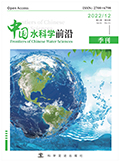参考文献
[1] 施上粟, 黃国文, 黃志伟, 等. 滞洪池湿地生态功能评价指数建立及应用[J]. 农业工程学报, 2016, 62(3): 1-12.

